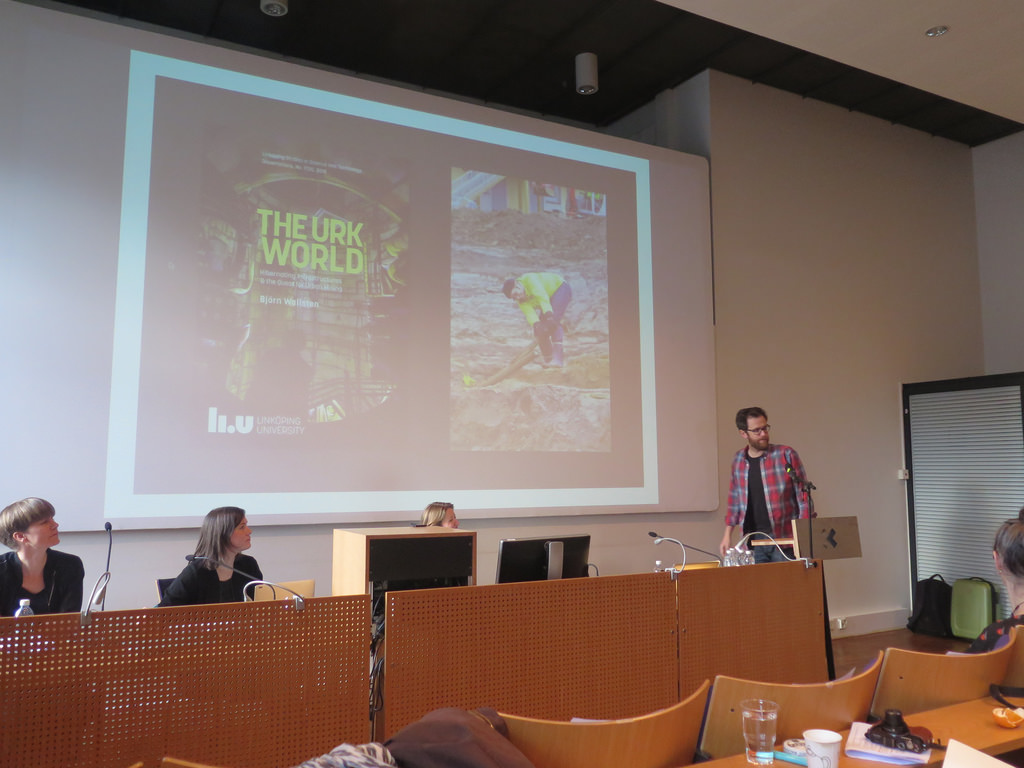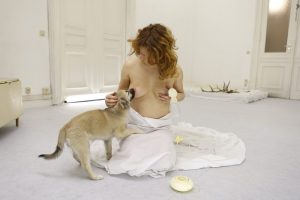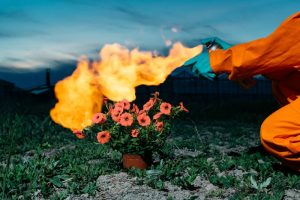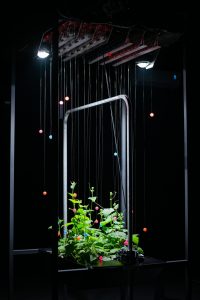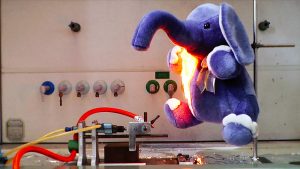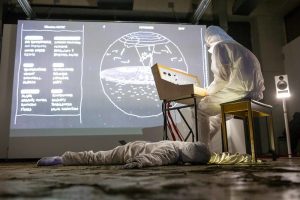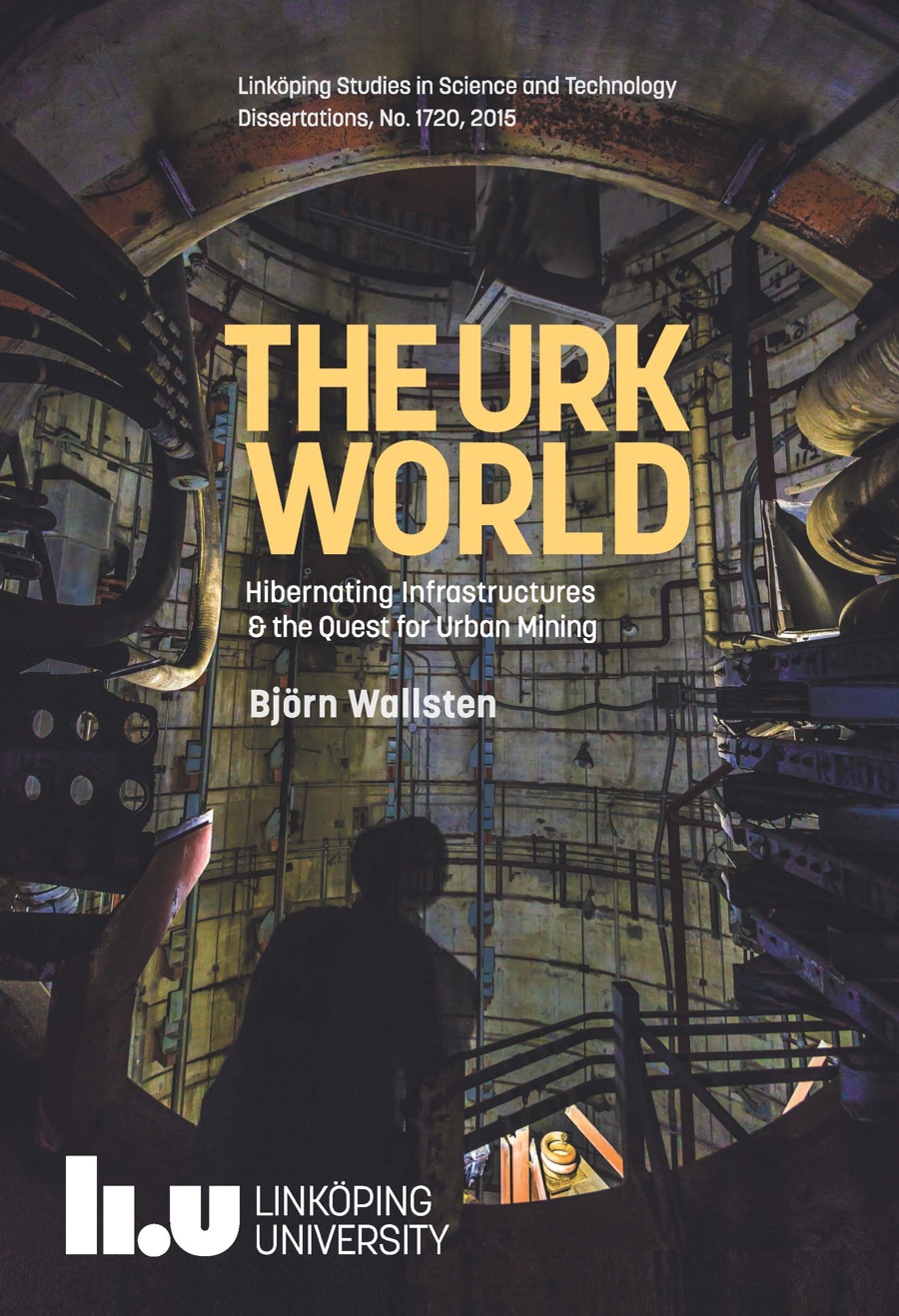
The HYBRID MATTERs symposium, which was organized by the Bioartsociety and took place at the University of the Arts in Helsinki a couple of weeks ago, investigated the intentional and unintentional transformation of our planet through human activity (and in particular technological activity.) There were talks about BINC technologies, animal sensors, slow violence and fast computation, plastiglomerates, plant subjectivities, plantamorphization, etc.
It was an eye-opening event in many aspects. It was also fun, engaging and inspiring. I still have to catch up with a few urgent deadlines this week but as soon as i’m done with those, i should be able to sit down and blog the pile of notes and photos i’ve taken while i was in Helsinki. In the meantime, if you’re curious about the event, just hop over here and enjoy the videos of the whole conference.
HYBRID MATTERs Symposium Panel I: In the Aftermath with Kristina Lindström, Åsa Ståhl, Thora Petursdottir, Björn Wallsten. On Friday 25th of November 2016
The panels of the second day were particularly exciting. Each of them. But i have a soft spot for Panel I: In the Aftermath that brought together artists Kristina Lindström and Åsa Ståhl, archaelogist Thora Petursdottir as well as researcher Björn Wallsten. Their presentation discussed the debris, narratives, material and processes that Western ideas of progress and development have discarded and left behind. What if it was not all about progress, novelty, invention and technological development?
What if we instead direct our attention towards processes of decay, erosion, breakdown and mouldering? What kind of practices and making does that invite for? What stories would we then be able to tell?
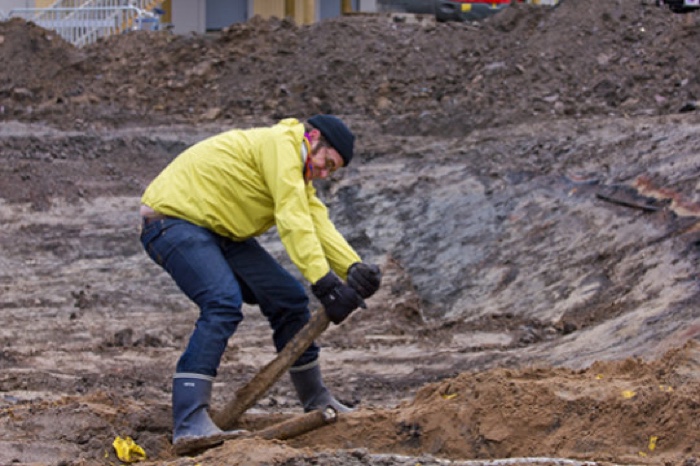
Björn Wallsten digging for urks. Photo: Linköping University
There’s one talk i’d like to highlight from the panel as it’s the one that stuck to my mind long after my departure from Helsinki. First, because i can’t resist a new word that evokes enigmatic worlds buried under our streets. Second, because although it focused on a Swedish industrial town i had never heard about before, the research should concern any urban agglomeration. Meet the urks…
Björn Wallsten is a post-doc researcher at the unit Technology and Social Change at Linköping University in Sweden and his research deals with urban mining and in particular urks, the disconnected infrastructure that was once crucial to urban life but is now out of use and is often invisible to us.
Urks are cables and pipes that remain under the ground after having be put out of use and disconnected. The researcher calls these leftovers ‘urks’, short for the swedish word urkopplad. Could we dig them out and recycle the valuable materials they are made of?
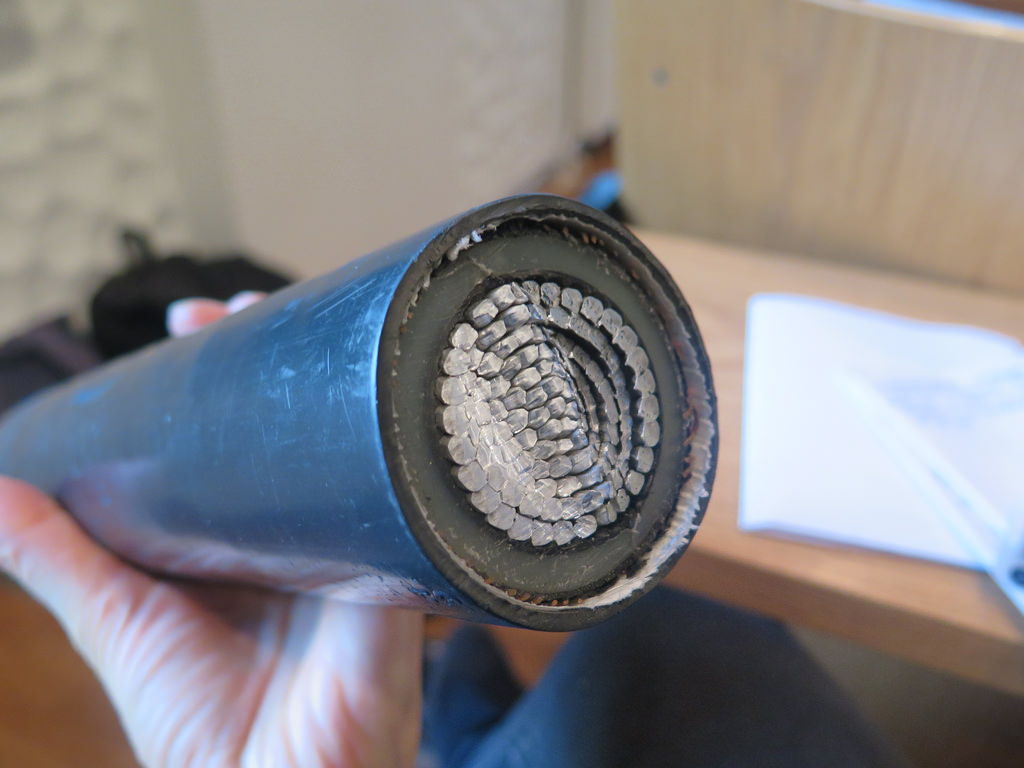
An electric cable urk
On the one hand, Wallsten’s research engaged in environmental systems analysis and made quantitative estimates of how big and spatially dispersed the worlds of Swedish urks are. On the other hand, the research was also exploring the social practices that surround the understanding, the accumulation and abandonment of urks as well as the practices related to the maintenance and upgrading of urban infrastructure.
1. Environmental systems analysis
The quantitative method used is called Material Flow Analysis (MFA.) MFA is used to quantify how much minerals we have dug up over time, how much of these masses have been used to erect the built environment and how much we have discarded and put in waste depositories such as landfills. If you have good estimates of how much stuff we’ve dug up and how much is piled in landfills, you can estimate the amount that should be present in the built environment.
However, when the researchers added together the estimates made of the weights of cities and landfills and compared them with the amounts that have been extracted over time, the numbers don’t add up. Which means that some masses are missing. Where are these so-called ‘hibernating stocks’?
Wallsten did a special MFA on the city of Norrköping in Sweden, focusing particularly on the urban underground. The objective was to make estimates of the hibernating stocks (mostly copper, aluminium and steel) that are theoretically available for recycling.
In total the researchers found something like 5000 tons of unused metals which corresponded to a fourth of the weight of the city infrastructure.
To give us an idea of how much this is, Wallsten explained that the 560 tonnes of copper that might be lurking under the streets of Norrköping is enough to provide the copper necessary to build 30 000 cars or 400 000 computers. The currently existing Urk world potentially contains enough copper to replace all the copper in electricity and telecoms cables in Sweden for the next 7 to 8 years.
And if you go to that level of comparison, you can compare the amount of copper in the Swedish electricity and telecom infrastructure to the amount left in the reserves of Sweden’s mine of Aitik, one of Europe’s largest copper mine.
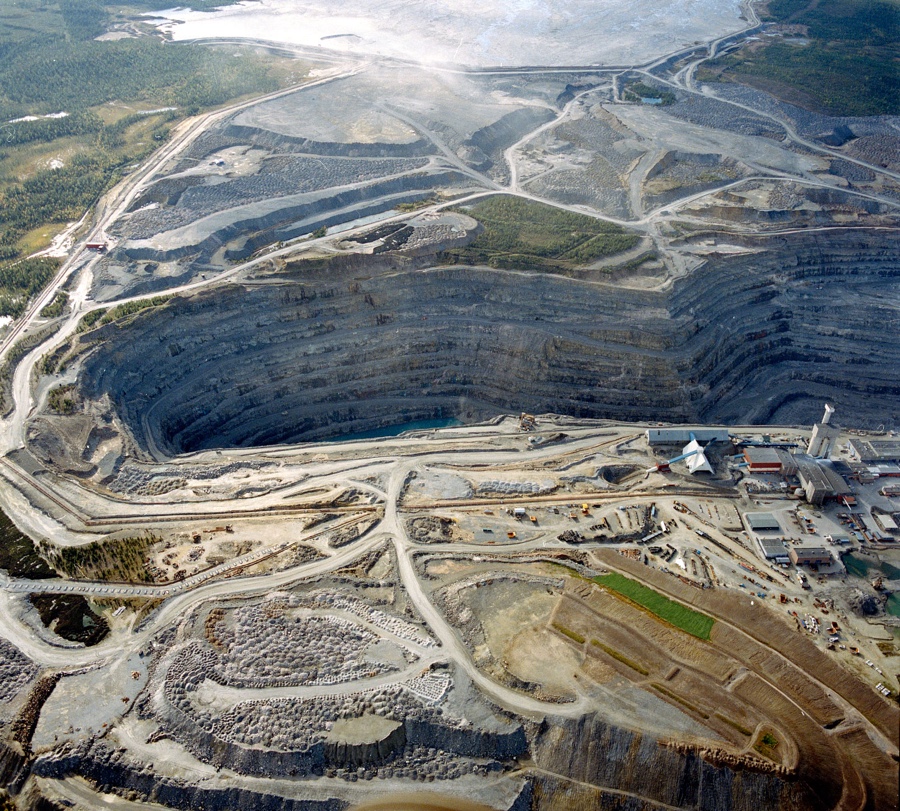
Aitik copper mine. Photo Boliden
But what are the implications of the existence of Urks? How can Urks be understood? What consequences does different Urk interpretations have for finding trajectories for their increased recycling?
The researchers asked these questions to different actors involved in infrastructure and waste related matters: the Swedish Ministry of Environment, the Swedish Environmental Protection Agency, a major metal recycling company, the Swedish Recyclers Association, the Technical Administration and Environment and Health offices of two municipalities, one cable consultancy company, two infrastructure system owners and one construction company.
These actors interpreted Urks in very different ways and understood them as entities that resisted easy categorisations. Some of these interpretations and their consequences in relation to Urk recycling.
What is an Urk?
Some respondents consider Urk as waste, “an entity that their owner had shown a clear interest or will to get rid of”. This interpretation makes the removal of Urks the responsibility of their owner. The problem is that such interpretation turns the Urk world, thus the urban underground, into a landfill! According to Swedish laws, safety precautions are required to prevent a landfill area from leaking toxic substances. The consequence of regarding Urks as waste is thus that all Sweden cities would need to implement landfill safety measures which is impossible. Or that the Swedish landfill legislation has to be rewritten. this kind of understanding would make our regulatory framework surrounding landfills and other things collapses.
Considering Urk as waste is a non-option.
A second interpretation considers Urks as resources because they contain valuable metals that could potentially be recycled. Following this interpretation, the urk world constitutes a mineral deposit that could be used for urban mining. The problem then is that Swedish recycling is done in a market setting and Urks cannot be recycled with a profit so there’s no chance anyone would want to engage with it. Interpreting Urks as resources is thus not enough to make things happen but it suggests several issues and unrolls several actors whose conflicting interests must be resolved for recycling to occur.
A third understanding regarded urks as pollution sources since some contains lead, asbestos and similar substances that can leak and contaminate soils. Such an understanding sends urks removal at the back of the queue behind more pressing concerns, the ones on top of the Swedish list of contaminated areas deemed for remediation. This last understanding of urks is quite convenient for the involved actors since no immediate action is required and no one is immediately responsible for urk removal which would be a costly endeavour nobody wants to grapple with.
The Swedish Ministry of Environment said this is how we handle this matter today: by hiding it under more pressing concerns.
Conclusion: The ambiguity of waste-like matter such as Urks might used to encapsulate their political potential: Urks can simultaneously be waste, resources, pollution sources and other things. We can use this pluralistic capacity to turn them from being a non-issue to a matter of concern. It is the possibility to understand Urks in different ways that harbour this political potentials, as different interpretations suggests different matters of concerns, conflict of interest that must be resolved for some kind of change to happen.
Wallsten’s PhD thesis, The Urk World – Hibernating Infrastructures and the Quest for Urban Mining, is available online as a free PDF.
The HYBRID MATTERs symposium, a collaboration between the Bioartsociety and the MA in Ecology and Contemporary Performance at the University of the Arts Helsinki, was part of a Nordic art&science research program that looked at hybrid ecologies, the convergence of our environment with technology and essentially the intentional and unintentional transformation of our planet through human activity.

